- Home›
- Healthy Living›
- 6 Exercises To Get Relief From Menstruation Pain
6 Exercises To Get Relief From Menstruation Pain
By: Priyanka Maheshwari Wed, 12 June 2024 10:42:50
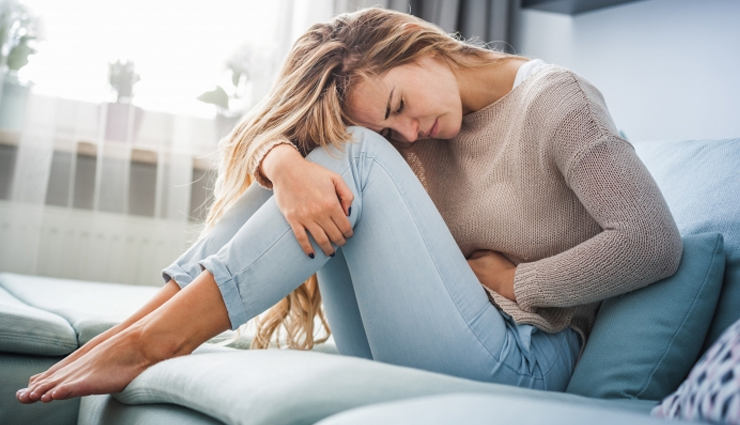
Menstruation is a natural biological process that occurs in people with female reproductive systems. It typically begins during puberty and continues until menopause. Menstruation, often referred to as a period, involves the shedding of the uterine lining in preparation for pregnancy. It usually lasts for a few days and is accompanied by hormonal changes that can cause physical and emotional symptoms.
Menstrual cycles vary in length and can range from around 21 to 35 days. While menstruation is a normal part of reproductive health, it can be accompanied by discomfort and is often managed with menstrual hygiene products such as pads or tampons.
Menstruation pain, also known as menstrual cramps or dysmenorrhea, refers to the discomfort or pain experienced by some individuals during their menstrual periods. It is a common symptom that can vary in severity from mild to debilitating and may occur before or during menstruation. Menstrual pain is primarily caused by the contractions of the uterus as it sheds its lining. These contractions can temporarily reduce blood flow to the uterus and cause pain.
Additionally, hormonal changes and the release of certain substances called prostaglandins can contribute to the intensity of the pain. While some individuals may experience minimal or no pain, others may require medication or other remedies to manage the discomfort. It's important to note that if menstrual pain is severe, significantly disrupts daily activities, or is accompanied by other concerning symptoms, it is advisable to consult a healthcare professional for further evaluation and guidance.
Engaging in certain exercises and physical activities can potentially provide relief from menstrual pain. Here are a few exercises that may help:
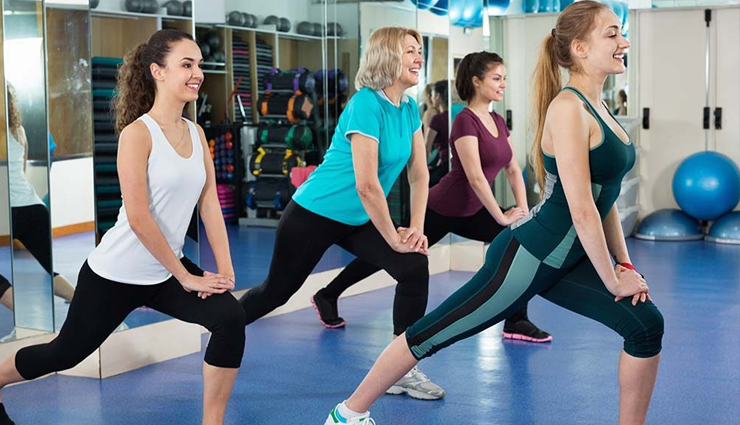
# Gentle aerobic exercises
Gentle aerobic exercises can be an effective and natural way to relieve menstruation pain for many individuals. Engaging in regular physical activity during your menstrual cycle can help reduce cramps, improve blood circulation, and release endorphins, which are natural painkillers. Here is some information about gentle aerobic exercises for relieving menstruation pain:
Walking: Walking is a low-impact aerobic exercise that can help alleviate menstrual pain. It promotes blood flow to the pelvic area and releases feel-good endorphins, which can reduce discomfort.
Cycling: Cycling, especially on a stationary bike, is another low-impact aerobic exercise that can help relieve menstrual pain. It engages the lower abdominal muscles, promotes blood circulation, and provides pain relief.
Swimming: Swimming is a gentle and low-impact exercise that can help ease menstrual pain. The buoyancy of water reduces the impact on joints and muscles, while the movements help increase blood flow and alleviate cramps.
Yoga: Certain yoga poses, such as child's pose, cat-cow, and gentle twists, can help relieve menstrual pain. Yoga combines stretching, breathing, and relaxation techniques to reduce muscle tension and improve overall well-being during menstruation.
Pilates: Pilates exercises focus on core strength, flexibility, and body alignment. Engaging in gentle Pilates routines can help alleviate menstrual pain by targeting the abdominal and pelvic muscles and improving circulation.
Dancing: Dancing is a fun and rhythmic aerobic activity that can help distract from menstrual pain. It promotes the release of endorphins, reduces muscle tension, and improves mood and overall well-being.
When engaging in aerobic exercises during menstruation, it's essential to listen to your body and choose activities that feel comfortable and do not exacerbate your pain. Start slowly and gradually increase the intensity and duration of your workouts.
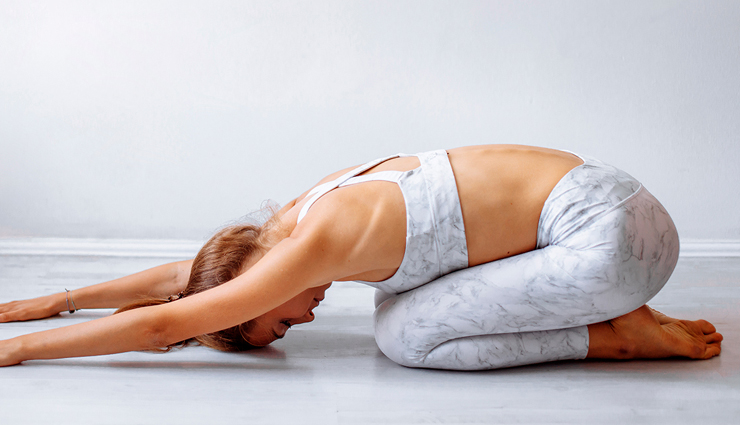
# Child's Pose
Child's Pose, also known as Balasana in yoga, is a gentle and restorative posture that can help relieve menstrual pain and discomfort. Here are the steps to practice Child's Pose for menstrual pain relief:
- Start by kneeling on the floor. Sit back on your heels and bring your big toes together, allowing your knees to be hip-width apart.
- Take a deep breath in, and as you exhale, slowly lower your torso down towards the floor.
- Extend your arms forward and rest them on the floor in front of you, palms facing down. Alternatively, you can bring your arms alongside your body, palms facing up.
- Lower your forehead to the mat, allowing your neck and shoulders to relax.
- Gently press your chest towards the floor, feeling a stretch in your lower back and hips.
- Stay in this position for 5-10 deep breaths, focusing on relaxing and releasing tension in your body.
- If you feel comfortable, you can gently rock your forehead from side to side or walk your fingertips to one side to deepen the stretch on each side of your body.
- To release the pose, slowly lift your torso back up and come back to a kneeling position.
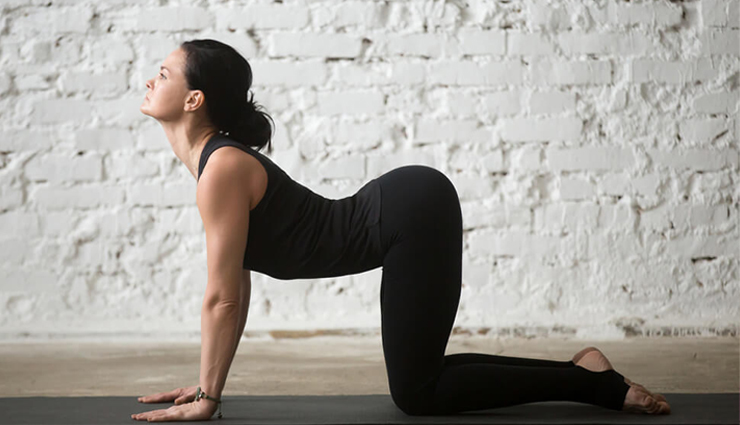
# Cat Cow Stretch
The Cat Cow Stretch is a gentle and effective yoga pose that can help relieve menstrual pain by stretching and mobilizing the spine. Here are the steps to practice Cat Cow Stretch:
- Start on your hands and knees, aligning your wrists directly under your shoulders and your knees directly under your hips. Your fingers should be spread wide with a firm grip on the mat.
- As you inhale, slowly drop your belly towards the mat, arching your back and lifting your chest forward and up. This is the Cow pose.
- As you exhale, round your spine upwards like a cat, tucking your tailbone and chin towards your chest. Draw your belly button towards your spine. This is the Cat pose.
- Continue flowing between Cow and Cat poses with your breath, inhaling to come into Cow and exhaling to transition into Cat.
- Coordinate your movements with your breath, aiming for a smooth and fluid transition between the two poses.
- Repeat this movement for several rounds, allowing your breath to guide the rhythm and depth of your stretches.
- Focus on creating space and mobility in your spine, while also being aware of any sensations or areas of tension in your lower back and abdomen.
- After completing several rounds, gradually come back to a neutral tabletop position, with your spine in a neutral position and your head in line with your spine.
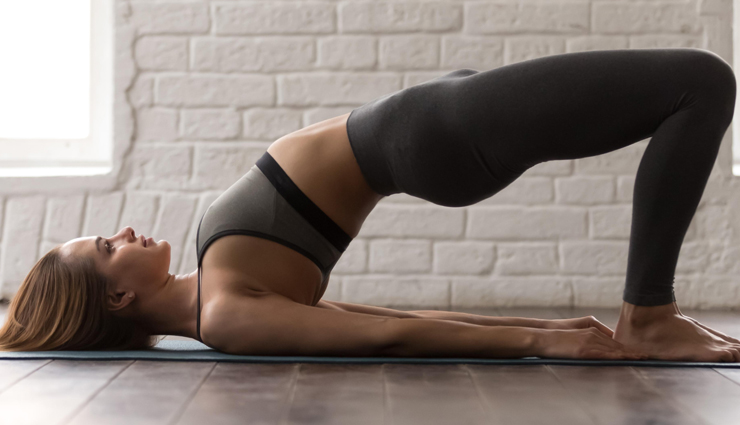
# Pelvic exercises
Pelvic exercises can help relieve menstrual pain and discomfort by promoting blood circulation, relaxing the pelvic muscles, and improving overall pelvic health. Here are steps to perform pelvic exercises for relief from menstruation pain:
- Find a comfortable seated position, either on a chair or on the floor with a cushion.
- Begin by taking a few deep breaths, allowing yourself to relax and focus on your pelvic area.
- Contract your pelvic floor muscles by imagining that you are stopping the flow of urine or squeezing your vaginal muscles. This is known as a Kegel contraction.
- Hold the contraction for 5-10 seconds, while continuing to breathe normally.
- Release the contraction and relax your pelvic floor muscles for the same duration.
- Repeat this cycle of contraction and relaxation for 10-15 repetitions.
- As you become more comfortable with the exercise, aim to gradually increase the duration of the contractions and relaxations.
- Perform these pelvic exercises daily or as needed to experience the benefits.
It's important to note that everyone's pelvic floor strength and needs are different. If you are unsure about performing pelvic exercises correctly or if you have any specific concerns, it's recommended to consult with a healthcare provider or a pelvic floor physiotherapist who can provide personalized guidance and recommendations.
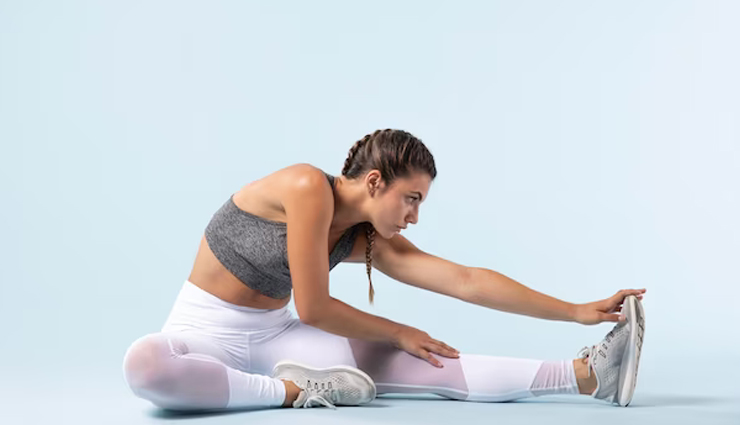
# Stretching exercises
Stretching exercises can help alleviate menstrual pain by relieving muscle tension, increasing blood flow, and promoting relaxation. Here are some steps to perform stretching exercises for relief from menstruation pain:
- Start by finding a comfortable and quiet space where you can stretch without distractions.
- Begin with deep, slow breaths to help relax your body and mind.
- Gentle Forward Fold: Stand with your feet hip-width apart. Take a deep breath in, and as you exhale, slowly bend forward from your hips, reaching your hands towards the ground or your shins. Allow your upper body to relax and hang. Hold this stretch for 15-30 seconds, breathing deeply, and then slowly rise back up.
- Seated Twist: Sit on the floor with your legs extended in front of you. Bend your right knee and place your right foot on the outside of your left knee. Take your left arm and hug your right knee, gently twisting your torso to the right. Hold the stretch for 15-30 seconds, breathing deeply, and then switch sides.
- Supine Butterfly Stretch: Lie on your back with your knees bent and the soles of your feet together. Allow your knees to drop out to the sides, feeling a gentle stretch in your inner thighs and hips. Rest your hands on your belly or reach your arms overhead for an additional stretch. Hold this position for 30-60 seconds while breathing deeply.
- Gentle Hip and Lower Back Stretch: Lie on your back and draw your knees towards your chest. Gently rock from side to side, massaging your lower back and hips. You can also extend one leg at a time, keeping the other knee bent, to stretch one hip at a time.
- Finish with a few minutes of relaxation in a comfortable lying or seated position, focusing on deep breathing and releasing any remaining tension in your body.
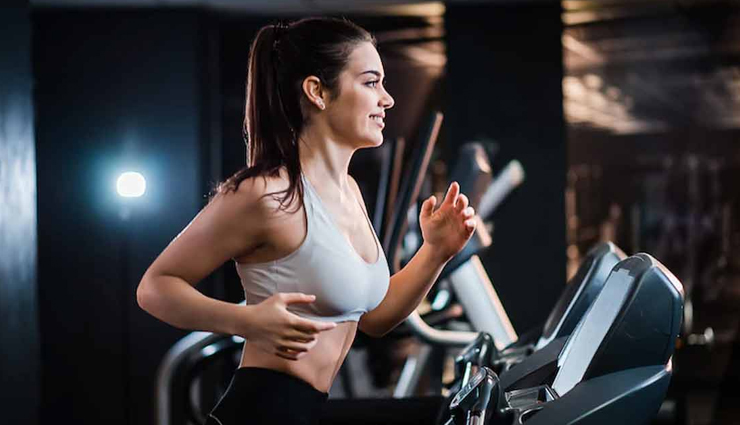
# Cardiovascular exercises
Engaging in moderate-intensity cardiovascular activities, like jogging or dancing, can stimulate endorphin release and help alleviate menstrual pain. Cardiovascular exercises can help provide relief from menstruation pain through various mechanisms. Here's how cardiovascular exercises can help alleviate menstrual pain:
Increased Endorphin Release: Cardio exercises such as brisk walking, running, cycling, or swimming stimulate the release of endorphins, which are natural painkillers and mood boosters. Endorphins help reduce pain perception and promote feelings of well-being, which can alleviate menstrual pain.
Improved Blood Circulation: Engaging in cardiovascular exercises increases blood flow throughout the body, including the pelvic area. Improved circulation helps reduce muscle tension, promote oxygen and nutrient delivery, and remove waste products, all of which can alleviate cramps and discomfort associated with menstruation.
Reduction in Prostaglandins: Prostaglandins are hormone-like substances that are involved in the uterine contractions responsible for menstrual cramps. Cardiovascular exercises can help decrease the production of prostaglandins, leading to a reduction in the intensity and duration of menstrual pain.
Stress Reduction: Regular cardiovascular exercises have been shown to reduce stress and anxiety levels. Stress can exacerbate menstrual pain, so engaging in activities that help manage stress, such as cardio exercises, can indirectly contribute to pain relief during menstruation.
Hormonal Balance: Exercise can help regulate hormonal levels, including estrogen and progesterone, which can impact the menstrual cycle. Maintaining a balanced hormonal profile through regular cardiovascular exercise may lead to less severe menstrual pain.
Remember to listen to your body and start with exercises that feel comfortable for you. It's important to consult with your healthcare provider before starting any new exercise routine, especially if you have any underlying medical conditions or concerns.





